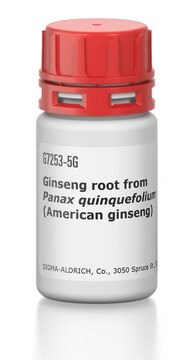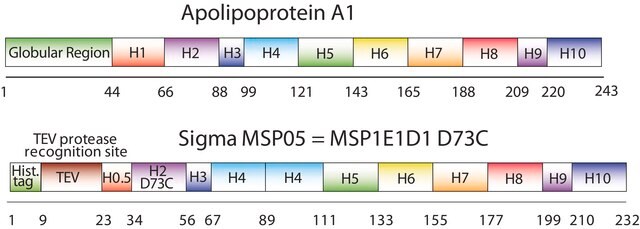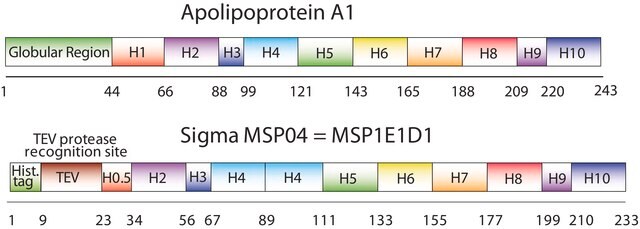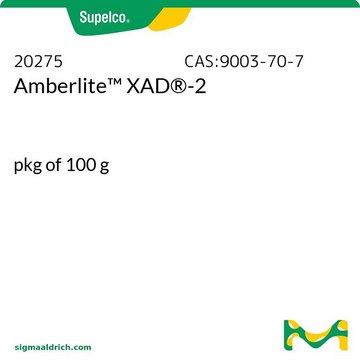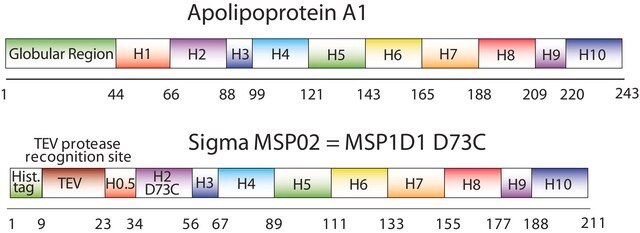추천 제품
생물학적 소스
Streptomyces kanamyceticus
Quality Level
재조합
expressed in E. coli
설명
N-Terminal histidine-tagged
형태
lyophilized powder
분자량
Mw 32599.98 by amino acid sequence
ε (흡광계수)
26,600 M-1cm-1 at 280 nm (His-tag-cleaved dissolved in 20 mM Tris pH 7.4, 0.1M NaCl, 0.5mM EDTA and 0.01%NaN3)(lit.)
29,400 M-1cm-1 at 280 nm (uncleaved His-tagged dissolved in 20 mM Tris pH 7.4, 0.1M NaCl, 0.5mM EDTA and 0.01%NaN3)(lit.)
저장 온도
−20°C
유사한 제품을 찾으십니까? 방문 제품 비교 안내
일반 설명
애플리케이션
생화학적/생리학적 작용
물리적 특성
물리적 형태
법적 정보
- 7,691,414 Membrane scaffold proteins
- 7,662,410 Membrane scaffold proteins and embedded membrane proteins
- 7,622,437 Tissue factor compositions and methods
- 7,592,008 Membrane scaffold proteins
- 7,575,763 Membrane scaffold proteins and tethered membrane proteins
- 7,083,958 Membrane scaffold proteins
- 7,048,949 Membrane scaffold proteins
관련 제품
신호어
Warning
유해 및 위험 성명서
예방조치 성명서
Hazard Classifications
Eye Irrit. 2 - Skin Irrit. 2 - STOT SE 3
표적 기관
Respiratory system
Storage Class Code
11 - Combustible Solids
WGK
WGK 3
Flash Point (°F)
Not applicable
Flash Point (°C)
Not applicable
시험 성적서(COA)
제품의 로트/배치 번호를 입력하여 시험 성적서(COA)을 검색하십시오. 로트 및 배치 번호는 제품 라벨에 있는 ‘로트’ 또는 ‘배치’라는 용어 뒤에서 찾을 수 있습니다.
이미 열람한 고객
문서
Read our article about how the Nanodisc system allows for structural studies of membrane proteins.
자사의 과학자팀은 생명 과학, 재료 과학, 화학 합성, 크로마토그래피, 분석 및 기타 많은 영역을 포함한 모든 과학 분야에 경험이 있습니다..
고객지원팀으로 연락바랍니다.


